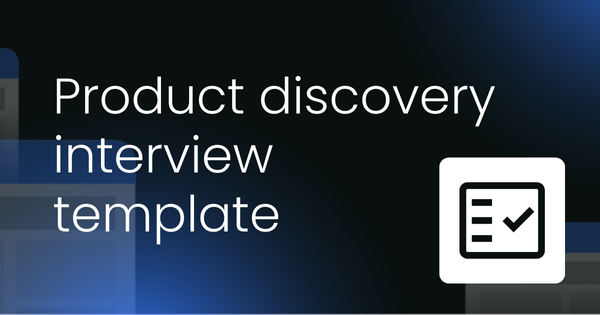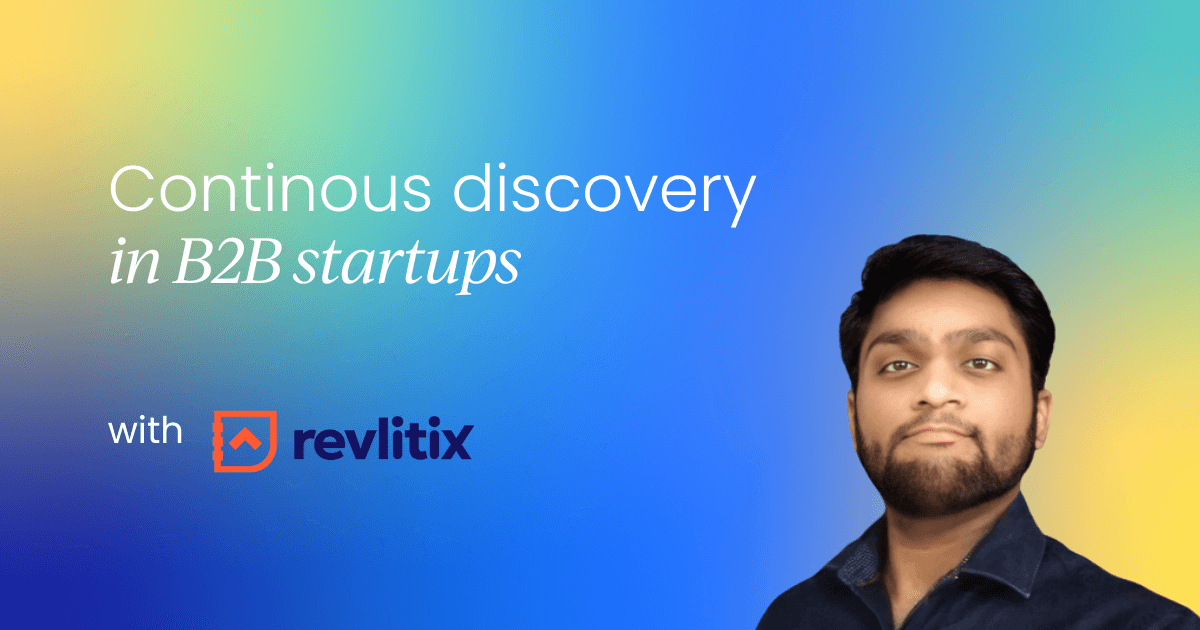Continuous product discovery is crucial for understanding customers and building great products to thrive in the market. So, let's dive into what continuous product discovery is and how we use it in my current company.
Below are my key takeaways from a session on 'Scaling Product Discovery' in B2B SAAS by Nalin Goel
Why is it important?
Continuous product discovery is about understanding whether users will use a product, if they'll buy it, and whether you have enough resources to build the right products and features for the customers.
It's about defining product direction, aligning with goals, and building what users need. You need to know if what you're building caters to the right and larger audience, aligning with our business goals. Below are the several ways continuous discovery helps companies.
- Adapting to changing customers' needs: Continuous discovery allows companies (especially startups) to evolve their products in response to the dynamic needs of their users. By maintaining regular customer interactions, startups can identify emerging needs and preferences, ensuring their offerings remain relevant and valuable.
- Enhancing decision-making: Frequent customer conversations provide companies with critical insights that enhance decision-making. By continuously validating assumptions and testing ideas, startups can prioritize features and improvements based on real user feedback rather than guesswork.
- Building a customer-centric culture: A Customer-centric mindset encourages all the team members to prioritize user feedback in their workflows. In some scenarios, the engineering team gets carried away from the roadmap or overwhelmed with the bulk of tasks, and aligning everyone on the common goal while maintaining individual interests becomes important for long-term success.
Ensure that customer feedback is shared amongst the teams. In an early-stage startup, having the flexibility to interact directly with customers is more feasible, and this advantage should be used correctly to move faster and in the right direction.
- Increasing confidence in product development: Regularly collecting and analyzing user feedback allows teams to validate their ideas and assumptions while reducing the risk of bad products being released.
- Streamlining the development process: It helps in prototyping and testing ideas quickly, allowing for rapid iterations based on user responses and avoiding any costly mistakes in product development.

When to use product discovery
It's better to practice continuous product discovery to be on top of the game. Focus on qualitative feedback for a quantitative approach to validate your assumptions.
Intent vs behavior: Actions speak more than words. Focus on what users do rather than what they tell. It can be taken from prospects, customers, sales, support teams, and customer success.
Along with gathering inputs from internal stakeholders, the focus should be on external partners/medium as well, such as:
a. Customers and users
b. Industry practitioners
c. Reviews from sites like G2
Scaling
Being close to customers solves most problems and gives them the best experience. Having a Customer Advisory Board allows you to connect with customers regularly. Syncing with the support team can help find the root cause of any drop-off. Scaling helps maintain continuous product discovery to generate better results.
Case study
Let's look at how continuous discovery helped Revlitix reach its quarterly goal while enhancing the customer base and adoption -
Revlitix is a Revenue Analytics platform catering to the Revops team, helping them enhance their GTM practices and gauge and optimize their sales effort to improve their ROI.
While having a couple of features catering to the sales ops persona, we figured out there's still room to explore the various sales personas and help the team to be more efficient and achieve their target revenue.
Potential existing problems observed:
a. Lack of transparency in monitoring sales representatives &team's performance.
b. Inefficiently tracking sales teams across region/continent.
c. No clear picture of which sales touchpoint to concentrate on in the pipeline to achieve their revenue target.
Opportunity observed
While Revlitix was catering to the marketing persona majorly with sufficient Marketing and Sales channels integration, solving the above problem would help the Sales and Marketing team collaborate effectively in driving their GTM practices, lead generation & deals won.
The sales team having huge numbers would help us increase our customer base. This led to the launch of a Sales Analytics module that caters to Sales Managers and leaders, helping them monitor and guide their sales representatives and teams to achieve their goals and hit the desired targets.
All this came through extensive user research and leveraging continuous product discovery to scale up and build the right product.
Feeling stuck when it comes to sales? We've all been there. But fear not! We've got the goods to push your sales game to the next level.
Welcome to our exclusive ebook on product-led sales – your ultimate guide to mastering the art of selling products in today's competitive landscape.




 Follow us on LinkedIn
Follow us on LinkedIn





